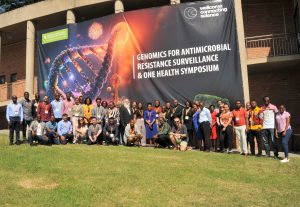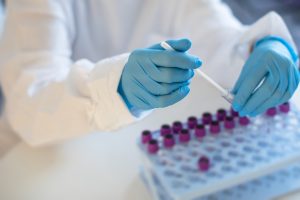24 November 2011
An AIDS patient previously on antiretroviral treatment appears to now be free of infection after a stem cell transplant where he received blood cells of a person with genes that are able to resist HIV infection. This so-called "Berlin patient" has raised the possibility that AIDS can be cured. Scientists are studying the genetic make-up of people whom they believe can lead them to finding a cure for HIV infection. This follows the case of a patient who appears to have been rid of AIDS after a stem cell transplant.
The patient now referred to as the "Berlin patient" has given scientists hope that a cure to eradicate AIDS can be found. "The question of an eliminating cure has really been sparked by a very interesting case of what was known as the Berlin patient, who was an individual who had acute myeloid leukaemia, required a bone-marrow transplant, was given one from a match donor that also did not have the ability to express CCR 5 one of the major HIV co-receptors on the cell's surface. And when you have that, you have the inability of HIV to enter into cells that would, otherwise, be permissive for infection". "Stem cells from this donor were given to the recipient after the recipient had chemo-therapy to remove the recipient's bone-marrow cells. This happened in about 2007 and, to date, it's four-and-a-half years later, there's still no detectable virus in this particular individual who was previously HIV-infected. It's a proof of principle that HIV can be cured" , explains Professor Caroline Tiemessen, a scientist who works with the Centre for the National Institute for Communicable Diseases (NICD), in Johannesburg. "There was some treatment with anti-retroviral therapy prior to the bone-marrow graft. And four years later the patient is not on anti-retrovirals", Professor Tiemessen adds.
"Now, what would normally happen in an HIV-infected patient that is on Highly Active Anti-retroviral treatment is the minute that you would stop treatment usually your virus rebounds and goes up again. So, it was very, very unusual to then see that the virus didn't come up again. And a number of tests were done on various sites on the patient. They tested (the) lymph node, they did various biopsies to actually see if they can find (the) virus in any other sites in the body", she explains further.
Part of scientists' investigations also involve studying the genes of people they have termed "long-term non-progressors" and "elite controllers". These are people who, after a considerably long number of years after having been diagnosed with HIV, are still healthy and are not taking AIDS treatment. On average, people with HIV will start taking ARVs about eight to ten years after infection. But there are people who have been infected for more than 10 years and they still have high CD 4 counts and low viral loads. Scientists believe that something in their genetic make-up which makes them immune to HIV disease progression can lead them to finding, at least, what they call a 'functional cure'.
"A functional cure (is) where you have a complete suppressive control of HIV infection, which would really be defined that if you have a viral load test your viral load will be less than 50 copies per milli-litre. The interesting thing about a functional cure is there is a group of individuals called 'elite controllers' that actually provide an excellent model to study to try and see what those patients have that actually gives them natural resistance to HIV disease progression because that group they are a very, very small group it's estimated about 1 in 300 HIV-infected individuals would be an elite controller have the ability to spontaneously suppress HIV to undetectable levels in the absence of Highly Active Anti-retroviral Treatment", Professor Tiemessen explains. Understanding the genetic profile of long-term non progressors can also help scientists to develop new treatment methods for HIV, she says. "They really hold the key to us understanding what constitutes natural resistance to HIV and disease progression. And if we can find out exactly what constitutes that that will help us find new viral as well as cellular targets that we can use in future to develop new therapeutics to HIV.
It's absolutely fundamentally important that we actually understand and really characterise individuals like that".
But what is it that's different in their cellular make-up from people who get ill fairly quickly?
"We noticed that a lot more genes that have been previously shown to be associated with good control of infection they have many, many more versions of those particular genes. So, it's almost as though different individuals have got several good genes and bad genes. Genes that would actually pre-dispose someone to more rapid progression, for example, progressors tend to have more of those and they have less good genes and the long-term non progressors and elite controllers have a combination of a lot of good genes", says Professor Tiemessen. Research being conducted in South Africa has recruited about 10 long-term non-progressors and elite controllers. Recruitment for participation is still on-going. This is a long-term study and it is not clear as to when results will come out.




